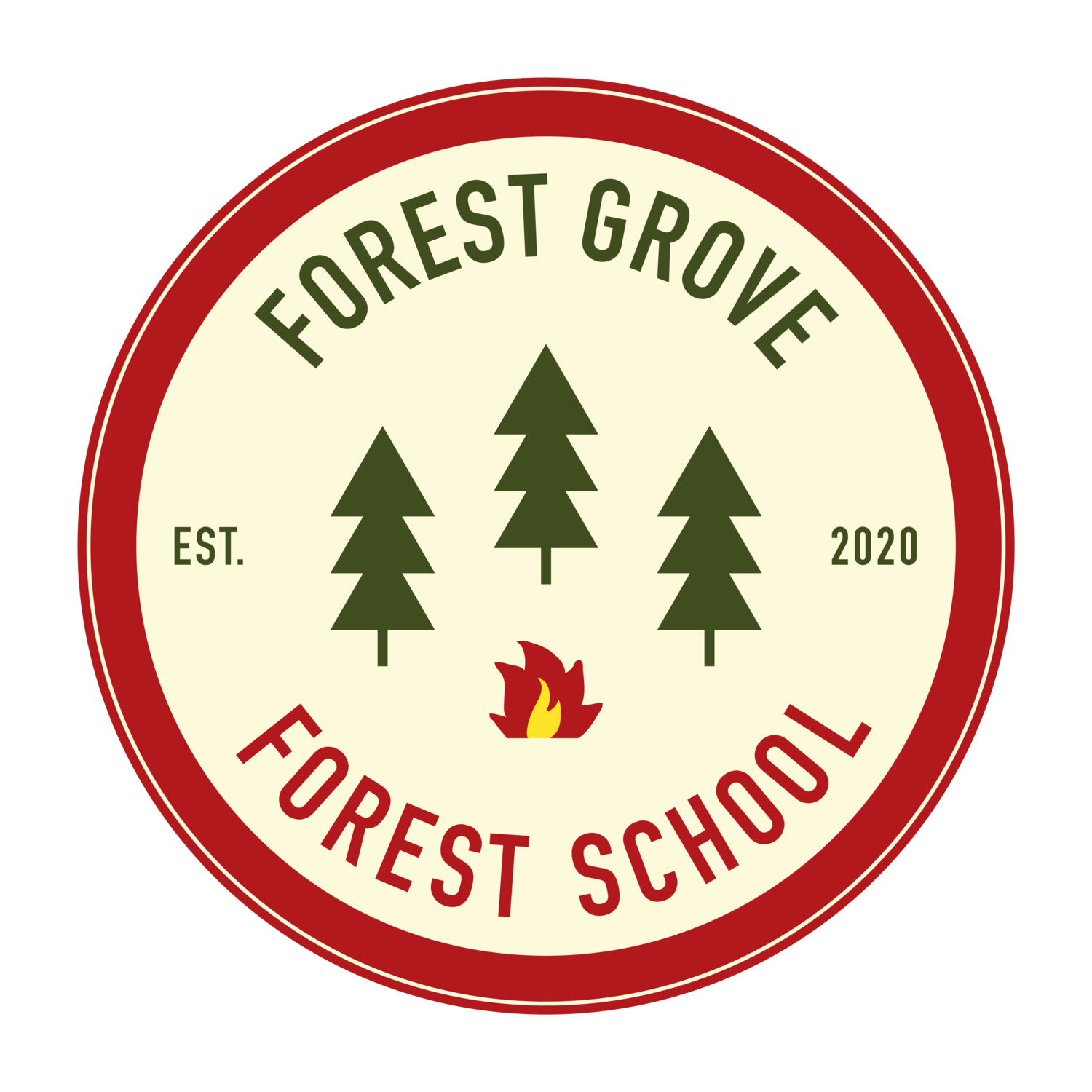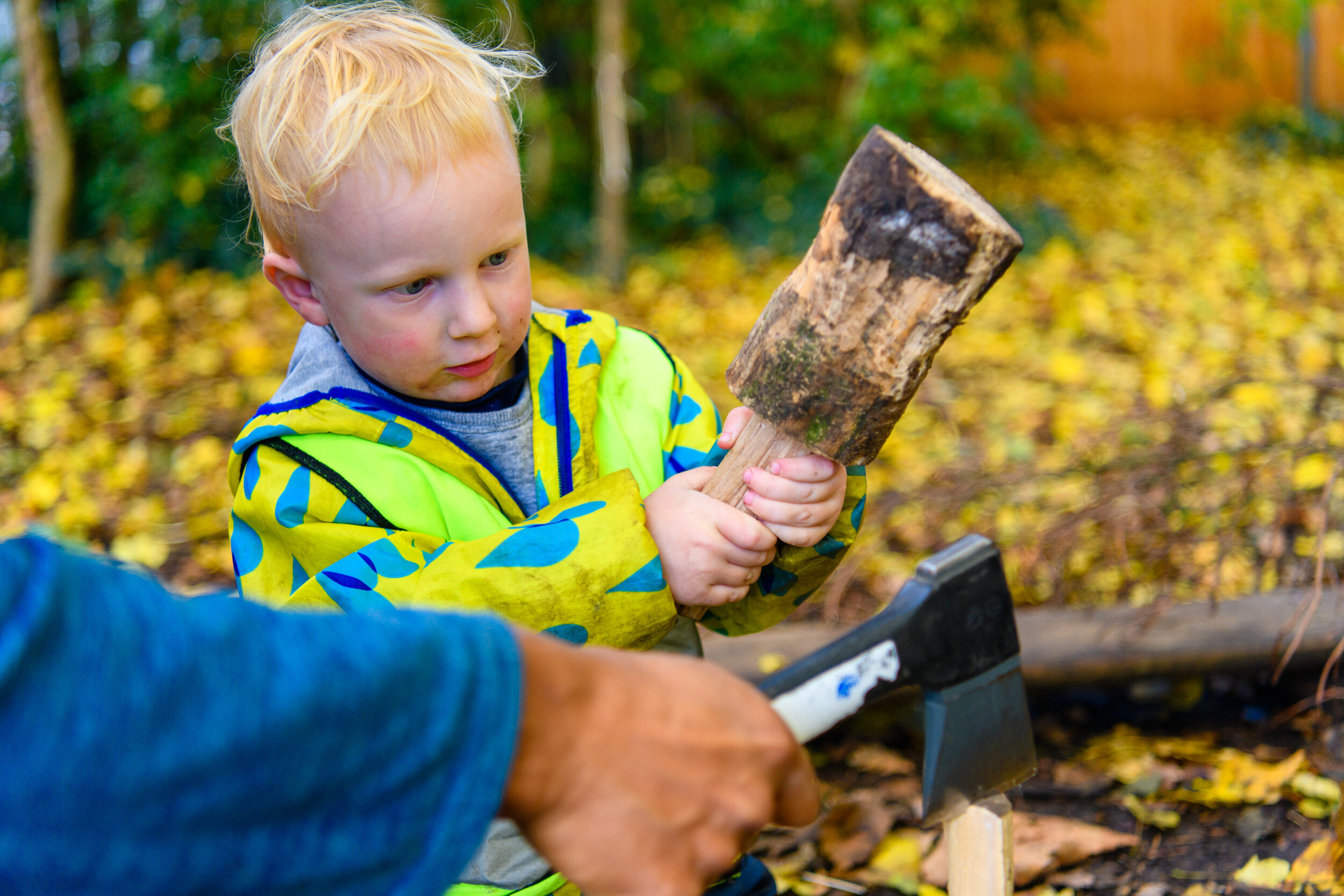
THE FOREST SCHOOL APPROACH TO LEARNING
HOW A FOREST SCHOOL PROGRAMME CAN SUPPORT HOLISTIC DEVELOPMENT AND LEARNING
The Forest School approach is based on the concept of an outdoor learning environment, which focuses on play-based learning, and is child-led. The approach provides all learners opportunities to achieve and develop independence, confidence and self-esteem through hands-on learning experiences in a woodland or natural environment. Learners achieve and develop because they are allowed to follow their own path and there is no expectations as to what the journey should look like.
The approach is based on a set of principles:
1. Nature provides the optimum learning environment
Forest school takes place in woodlands or a natural environment. The Forest Schools approach is underpinned by the Danish philosophy of friluftsliv. – this directly translates as “free air life”. In Denmark they don’t ‘do’ Forest School; they live it. Friluftsliv includes a notion of freedom, fresh air, experiential learning and a connection with nature as way of life.
Children who have grown up enjoying and playing in natural spaces are more likely to develop a connection with natural world. This is likely to instill in them a passion for conservation and sustainability as adults, and a desire to pass on such values to subsequent generations.
Not only does nature allow a child to feel freedom and gives them a connection with nature, nature provides the optimum learning environment as children learn best from first hand experiences.
2. Children learn from real-life, first-hand experiences
Children learn from real life first hand experiences which nature and being outdoors provides. Research has proven that children learn from physical concrete learning, as these are memorable. Artificially construed activities are not memorable.
Through playing with open-ended natural resources, Forest School provides real-life first-hand experiences, which promotes creative thinking, independence and resilience. This in turn develops self-confidence and higher self-esteem.
3. Forest School is a process not a product.
Forest School is a ‘learning’ journey, which evolves over time. Children who learn through play, child led play, in nature are often described as being in ‘flow’. Flow happens when children are totally engrossed in play, which may start off as adult led but then becomes child led, where the children are directing themselves and engrossed by their own learning. This style of learning or ‘flow’ only comes about when a child visits a natural outdoor setting on a regularly basis. You know when there is ‘flow’ as an observer, as it means you are sitting back and not interfering with their play, which has evolved from the children. It is for this reason, that Forest school is a process - the benefits cannot be seen from a one off visit.
When a child visits a setting regularly, it allows opportunities for the child to understand boundaries and gives time for practitioners to plan, adapt, observe and review.
4. Forest School should involve an element of risk
At Forest School the children learn to manage and assess their own risks. They learn to problem solve and take appropriate risk. Learning to take appropriate risk is a life skill and is a key element to a child’s learning and development that can be best achieved in an outdoor environment.
Some risk is good even essential for learning and children are taught to manage and assess their own risks.
By providing a risk-assessed environment where children can take calculated risks, the children are then empowered to make their own choices.
5. Forest school is child-led and learning is play-based
Forest School is child-led and learning is play-based. This means the children lead their learning experiences. Children thrive in a child-led environment and play-based learning encourages their imagination and keeps the child motivated and curious.
Child-led: The Forest School approach puts the learner first – The practitioners are responsive to the needs and interests of the children first and follow their lead to learning. Every child is unique and needs the space to develop in his/her own pace.
Forest School is a place for children to just be without judgement or expectation. Children and adults learn at different paces and in different ways. The Forest School ethos is to provide a community so that everyone feels supported and everyone is being held.
Learning through play is a term used to describe how a child can learn to make sense of the world around them.
Play is needed for healthy brain development: a child brain’s develops quickly in the first few years of a child’s life – these are the most critical years for brain development. If a child is exposed to stimulating play and learning experiences the brain will build connections called neural pathways, which is crucial for cognitive development.
Through play children can develop social and cognitive skills, mature emotionally, and gain the self-confidence required to engage in new experiences and environments. It is a concept that sits closely to my beliefs.
The outdoors lends itself to support child-led play and play-based learning where a child is free to use their imaginations. A child thrives when free to explore and play.
6. Forest School follows a holistic approach - SPICES
Forest School takes a holistic approach focusing on the whole child: mind, body and spirit. Holistic learning recognises that every child is unique and develops at his/her own pace.
Holistic learning recognises that a child does not learn and develop first in one learning area and then another, but learns and develops in all areas at all times, and that the learning should include the child’s social, physical, intellectual, communication, emotional and spiritual development (SPICES).
7. Forest School encourages a reflective practice
Part of the Forest School Approach is for practitioners to constantly reflect on own practice. Practitioners work together and at the end of each session reflect with the children and with themselves thereby discussing the needs of the children and how they can best support the child’s learning and development. All our practitioners are Level 3 Forest School practitioner with paediatric forest school first aid qualifications. We work in low ratios: one adult to four children.
In addition to the above, there are other aspects, which are characteristic to the Forest School approach such as:
A trust relationship between practitioners and child(ren)
Forest School takes place no matter the weather








